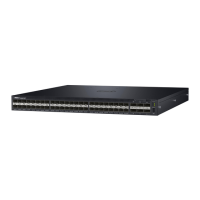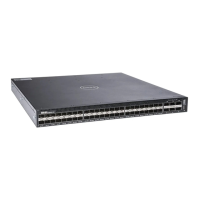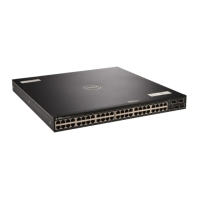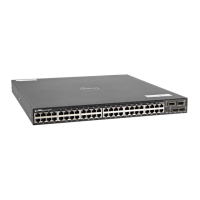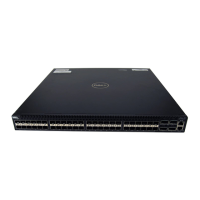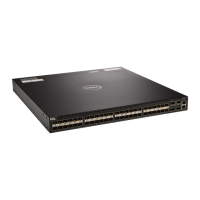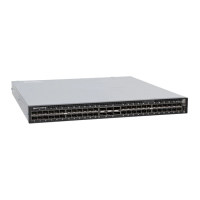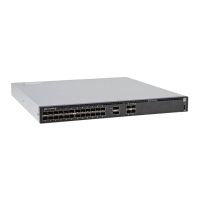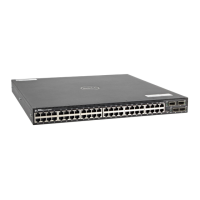Important Points to Remember
• You can stack up to six systems.
• You cannot stack one system with other system types.
• You cannot enable stacking and virtual link trunking (VLT) simultaneously on the device. To convert a
stacked unit to VLT, see Reconfiguring Stacked Switches as VLT.
• When using the 40G ports, you can configure a single port as a stack port; each 40G port is a stack-
group.
• All the ports in a stack-group are placed in stacking mode. Unused ports in that group cannot be used
as data ports.
• Stacking on the device is accomplished through front-end user ports on the chassis.
• All stack units must have the same version of Dell Networking OS.
Stacking Installation Tasks
The following are the stacking installation tasks.
• Create a Stack
• Add Units to an Existing Stack
• Split a Stack
Create a Stack
Stacking is enabled on the device using the front end ports.
No configuration is allowed on front end ports used for stacking. Stacking can be made between 10G ports of
two units or 40G ports of two units. The stack links between the two units are grouped into a single LAG.
Stack Group/Port Numbers
By default, each unit in Standalone mode is numbered stack-unit 1.
A maximum of eight 10G stack links or two 40G stack links can be made between two units in a stack. The
front end ports are divided into 18 stack groups, each with 40G of bandwidth. Stack groups 0 through 11
correspond to 10G stack groups with four ports each. Stack groups 12 to 17 are one 40G port each.
The front end ports accommodate QSFP+.
• Ports are divided into 18 stack-groups (0 to 17) as shown in the following example. The stack groups
must be of a single speed - either all 10G or all 40G.
• stack-group 0 corresponds to ports 1-4, stack-group 1 corresponds to ports 5-8, so on through
stack-group 11.
Stacking 1021
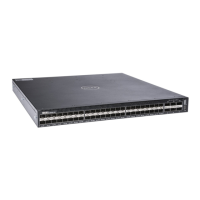
